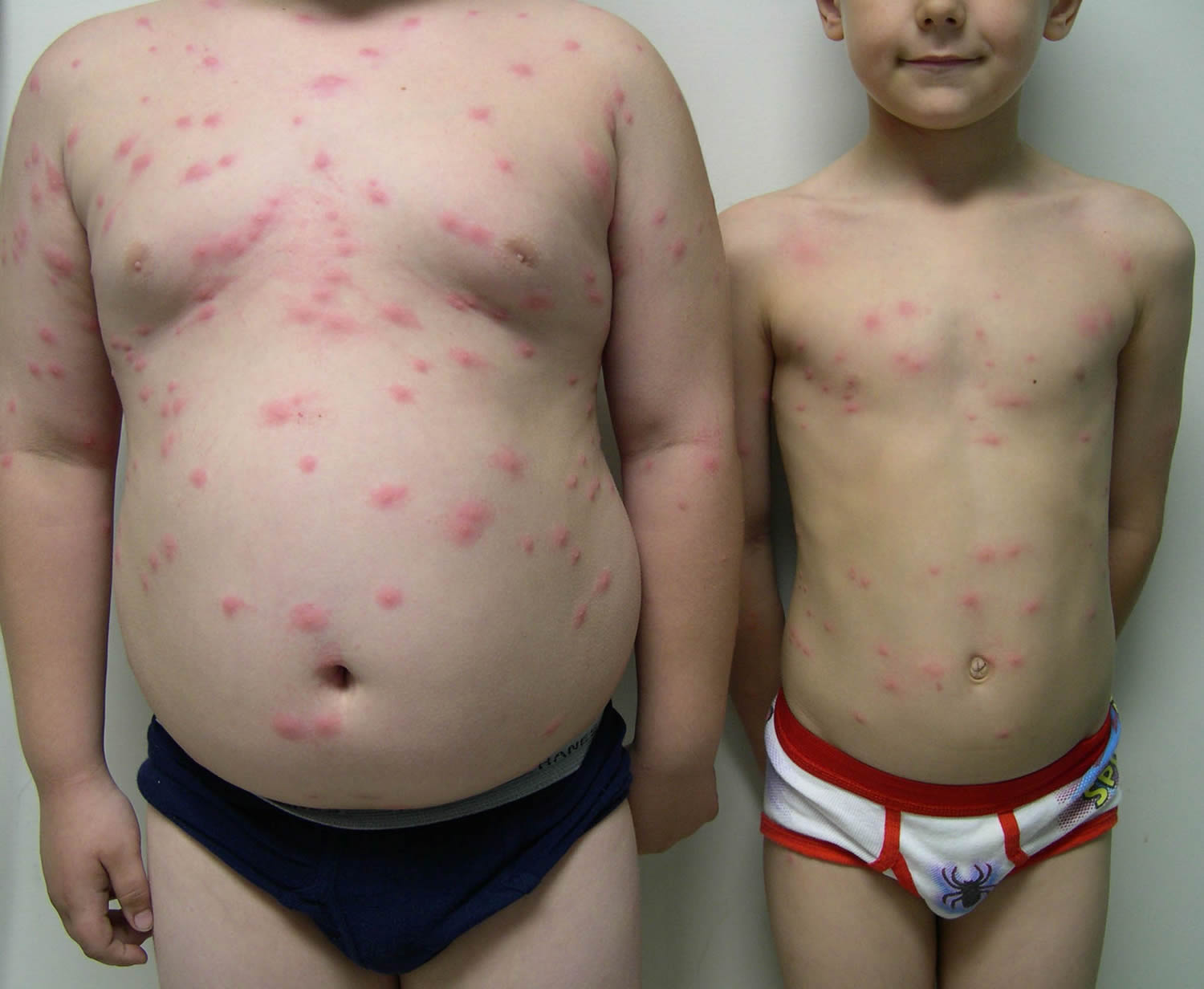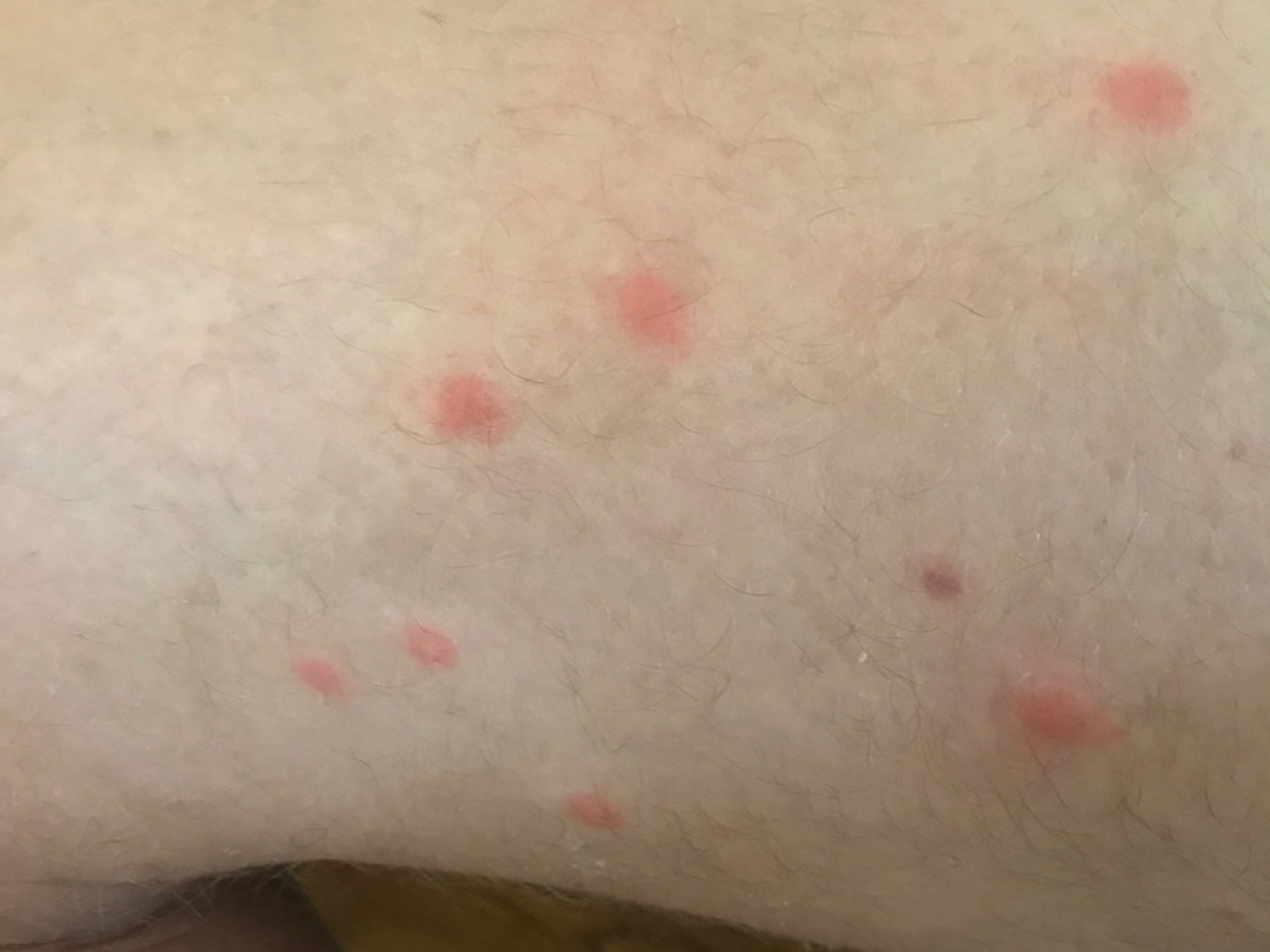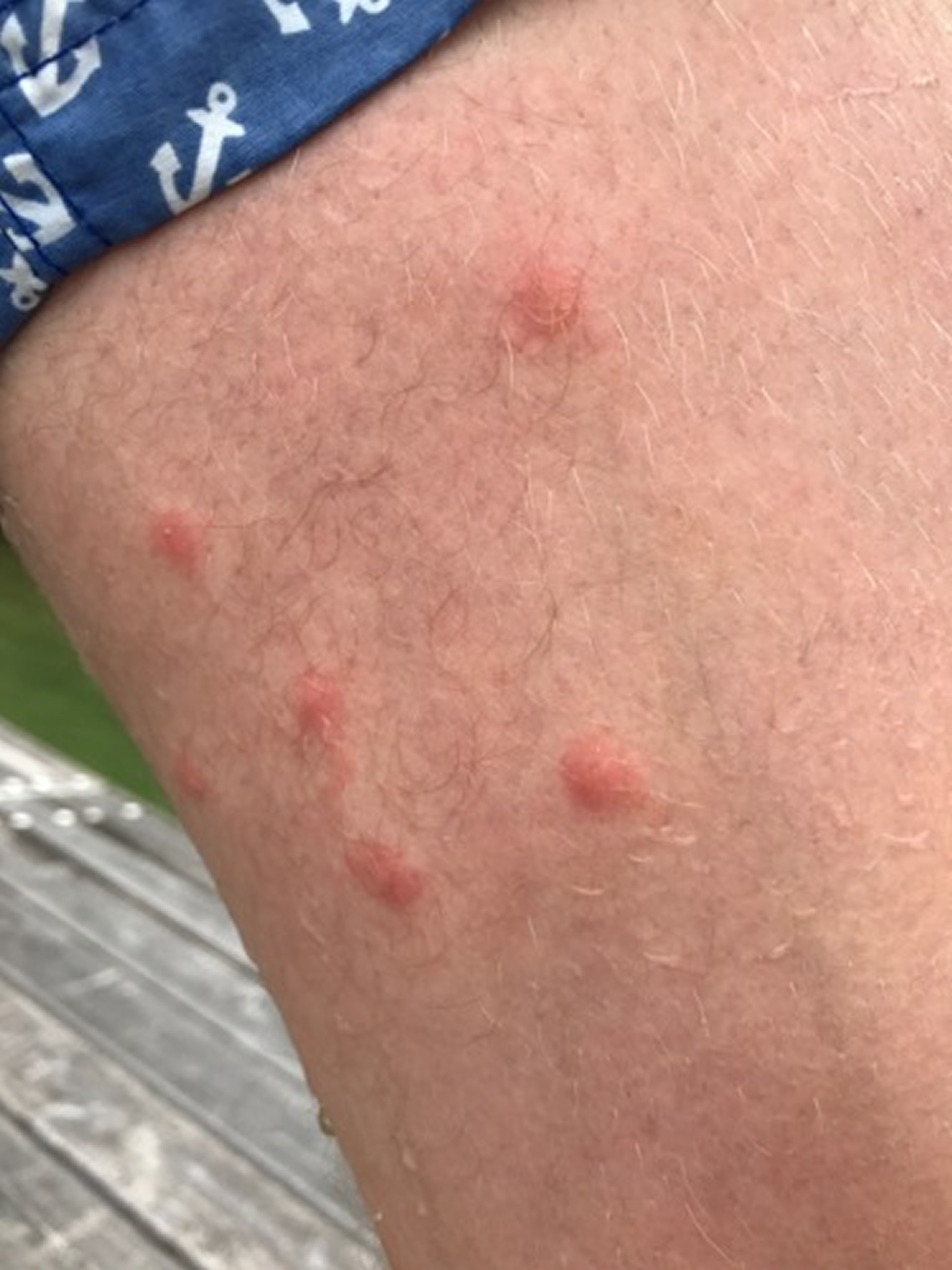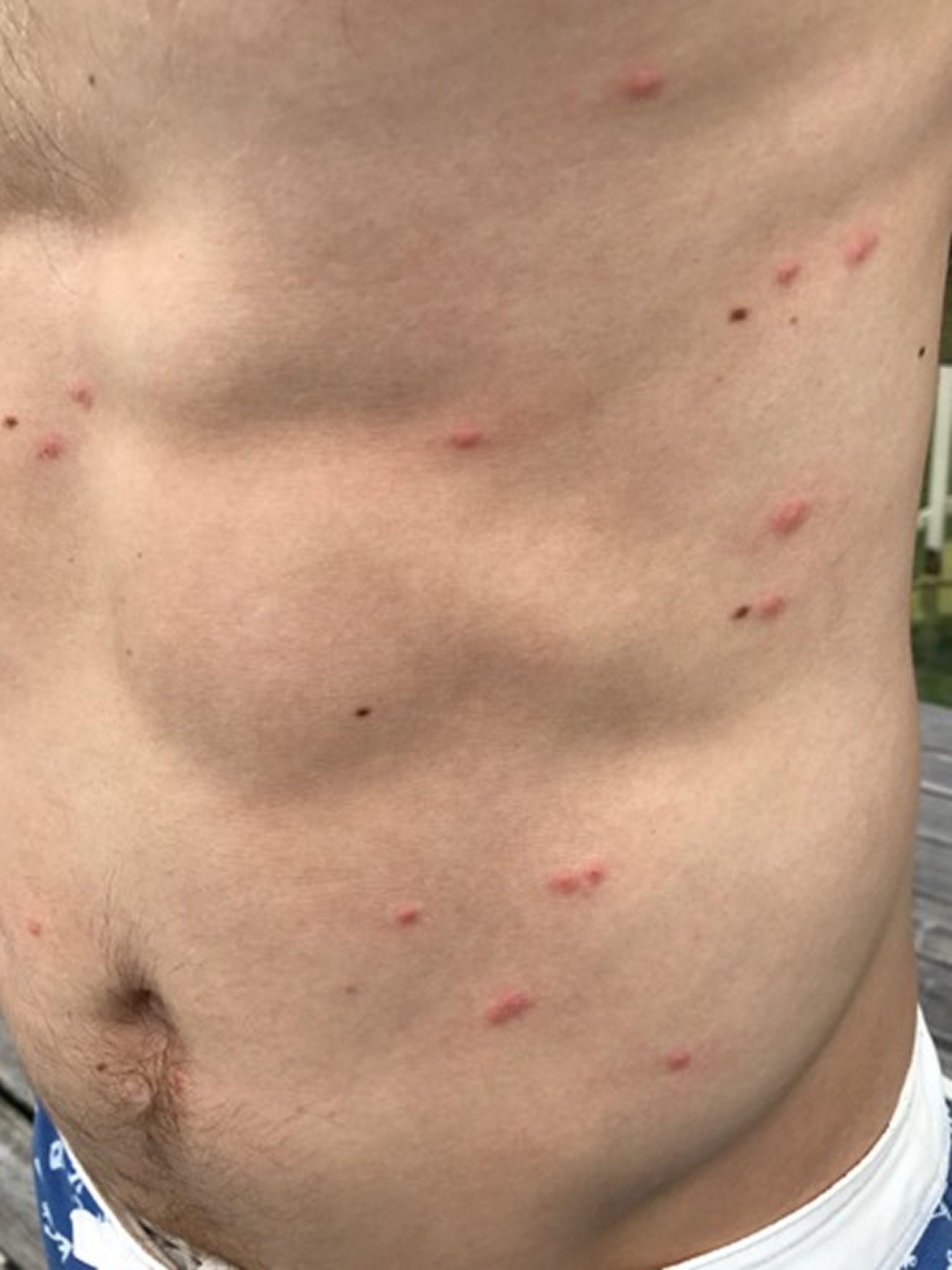Contents
What is swimmer’s itch
Swimmer’s itch, also called cercarial dermatitis, is a skin rash caused by penetration of human skin by cercariae of schistosome parasites and an allergic reaction to an infestation with certain parasites that infect some birds and mammals 1. Immature larval forms (cercariae), of parasitic flatworms (schistosomes), are released from infected snails into fresh and salt water, such as lakes, ponds, and lagoons. Cercarial dermatitis is usually acquired in freshwater habitats, and less commonly in marine or estuarine waters. Swimmer’s itch develops on exposed areas of the skin after contact with these larval forms when they mistakenly penetrate the person’s skin (rather than its usual host, a duck).
While the parasite’s preferred host is the specific bird or mammal, if the parasite comes into contact with a swimmer, it burrows into the skin causing an allergic reaction and rash. Swimmer’s itch is found throughout the world and is more frequent during summer months. Most cases of swimmer’s itch do not require medical attention.
Several factors may increase the risk of swimmer’s itch. In summer:
- The water temperature reaches the appropriate level for snails to reproduce and grow rapidly.
- Migrating aquatic birds infected with the trematode parasite return from their winter habitats or domesticated aquatic birds return to full activity.
- People go out swimming.
Other names for swimmer’s itch
The technical name for swimmer’s itch is cercarial dermatitis. In developing countries, swimmer’s itch has been called ‘rice paddy itch’, ‘clam diggers itch’, ‘sawah’ (Malaysia), ‘kubure’ or ‘kobanyo’ (Japanese) and ‘hoi con’ (Thailand). In New Zealand it is called ‘Duck Itch’ and in parts of United States it is called ‘Duckworms’ or ‘Duck fleas’. When infection occurs in sea water, it is sometimes called ‘Sea Lice’. Swimmer’s itch should not be confused with sea bather’s eruption (caused by larval forms of the thimble jellyfish sea anenome or Portuguese Man-of-War) or seaweed dermatitis (caused by an alga).
Figure 1. Swimmer’s itch parasite – Cercariae of Austrobilharzia variglandis – which can cause cercarial dermatitis. Note the forked “tail” and a pair of “eye spots” near the anterior end (right).
What does swimmer’s itch look like
Figure 2. Swimmer’s itch – multiple very itchy papules one day after water sports in a Michigan lake. “Lake itch”
Figure 2. Swimmer’s itch – small, inflammatory papules develop in the the skin not covered by the bathing suit, in contrast to sea bather’s eruption, in which the lesions occur in skin covered by the bathing suit.
Figure 3. Swimmer’s itch
Figure 4. Swimmer’s itch
Swimmer’s itch causal agent
Cercarial dermatitis is caused by the cercariae of certain species of schistosomes whose normal hosts are birds and mammals other than humans. These cercariae seem to have a chemotrophic reaction to secretions from the skin and are not as host-specific as other types of schistosomes. They attempt to, and, sometimes may actually, enter human skin. The penetration causes a dermatitis which is usually accompanied with intense itching, but the cercariae do not mature into adults in the human body. Cases of cercarial dermatitis can occur in both fresh and brackish water environments. One species of schistosome often implicated in cases of cercarial dermatitis is Austrobilharzia variglandis, whose normal hosts are ducks. The snail, Nassarius obsoletus, is the intermediate host for this species and can be found at marine beaches in temperate climates. Cercarial dermatitis should not be confused with seabather’s eruption, which is caused by the larval stage of cnidarians (e.g., jellyfish). The areas of skin affected by seabather’s eruption is generally under the garments worn by bathers and swimmers where the organisms are trapped after the person leaves the water. Cercarial dermatitis occurs on the exposed skin outside of close-fitting garments.
Life Cycle of Swimmer’s Itch Parasites:
Note: Hosts of avian schistosomes can be either year-round resident or migratory birds, including seagulls, shorebirds, ducks, and geese. Adult worms are found in the blood vessels and produce eggs that are passed in the feces (number 1). On exposure to water, the eggs hatch and liberate a ciliated miracidium that infects a suitable snail (gastropod) intermediate host (number 2). The parasite develops in the intermediate host (number 3) to produce free-swimming cercariae that are released under appropriate conditions and penetrate the skin of the birds and migrate to the blood vessels to complete the cycle (number 4). Humans are inadvertent and inappropriate hosts; cercariae may penetrate the skin but do not develop further (number 5). A number of species of trematodes with dermatitis-producing cercariae have been described from both freshwater and saltwater environments, and exposure to either type of cercaria will sensitize persons to both.
How does water become infested with the parasite?
The adult parasite lives in the blood of infected animals such as ducks, geese, gulls, swans, and certain mammals such as muskrats and raccoons. The parasites produce eggs that are passed in the feces of infected birds or mammals.
If the eggs land in or are washed into the water, the eggs hatch, releasing small, free-swimming microscopic larvae. These larvae swim in the water in search of a certain species of aquatic snail.
If the larvae find one of these snails, they infect the snail, multiply and undergo further development. Infected snails release a different type of microscopic larvae (or cercariae, hence the name cercarial dermatitis) into the water. This larval form then swims about searching for a suitable host (bird, muskrat) to continue the lifecycle. Although humans are not suitable hosts, the microscopic larvae burrow into the swimmer’s skin, and may cause an allergic reaction and rash. Because these larvae cannot develop inside a human, they soon die.
Who is at risk for swimmer’s itch?
Anyone who swims or wades in infested water may be at risk. Larvae are more likely to be present in shallow water by the shoreline. Children are most often affected because they tend to swim, wade, and play in the shallow water more than adults. Also, they are less likely to towel dry themselves when leaving the water.
What are the signs and symptoms of swimmer’s itch?
Symptoms of swimmer’s itch may include:
- tingling, burning, or itching of the skin
- small reddish pimples
- small blisters
Within minutes to days after swimming in contaminated water, you may experience tingling, burning, or itching of the skin. Small reddish pimples appear within 12 hours. Pimples may develop into small blisters over the next 24 to 48 hours. Scratching the areas may result in secondary bacterial infections. Itching may last up to a week or more, but will gradually go away. Untreated, the rash usually settles within several weeks.
The rash is usually limited to areas of the body that get exposed directly to water, so skin under swimwear is often protected. People who have suffered swimmer’s itch before may be more severely affected on repeated exposures.
Because swimmer’s itch is caused by an allergic reaction to infection, the more often you swim or wade in contaminated water, the more likely you are to develop more serious symptoms. The greater the number of exposures to contaminated water, the more intense and immediate symptoms of swimmer’s itch will be.
Be aware that swimmer’s itch is not the only rash that may occur after swimming in fresh or salt water.
How long does swimmer’s itch last?
The allergic reaction to penetrating cercariae is self-limiting; signs and symptoms usually will resolve within 1-2 weeks. Minimal symptomatic treatment and good hygiene to prevent itching and secondary infections are usually sufficient treatment for most cases of cercarial dermatitis.
Is swimmer’s itch contagious?
Swimmer’s itch is not contagious and cannot be spread from one person to another.
How to prevent swimmer’s itch
To reduce the likelihood of developing swimmer’s itch
- Do not swim in areas where swimmer’s itch is a known problem or where signs have been posted warning of unsafe water.
- Do not swim near or wade in marshy areas where snails are commonly found.
- Avoid the shoreline, if possible. If you’re a strong swimmer, head to deeper water for your swim. You may be more likely to develop swimmer’s itch if you spend a lot of time in warmer water near the shore.
- Towel dry or shower immediately after leaving the water.
- Do not attract birds (e.g., by feeding them) to areas where people are swimming.
- Apply waterproof sunscreen. This has been reported to protect the skin from the parasite that causes swimmer’s itch.
- Encourage health officials to post signs on shorelines where swimmer’s itch is a current problem.
Because the cercariae are present in greatest concentration in shallow, warmer water (where the snails are), swimmers should try to avoid these areas. This is often why small children seem to get worse attacks. Swimmer’s itch may be diminished by briskly rubbing the skin with a towel immediately after leaving the water, to prevent the cercariae from having time to penetrate the skin.
Since swimmer’s itch is really a disease of aquatic birds, the target should be to reduce the possibilities of the birds getting infected. In some small ponds and lakes, the intermediate snails can be killed by chemical molluscicides (copper sulfate or copper carbonate). A newer approach has been to place a drug for treatment of the parasite into food bait for the aquatic birds. Indirectly, it is important that any vegetation in the pond or the lake be kept to a minimum so that the snails do not have the ideal environment to grow.
Do not attract birds by feeding them to areas where people are swimming.
Once an outbreak of swimmer’s itch has occurred in water, will the water always be unsafe?
No. Many factors must be present for swimmer’s itch to become a problem in water. Since these factors change (sometimes within a swim season), swimmer’s itch will not always be a problem. However, there is no way to know how long water may be unsafe. Larvae generally survive for 24 hours once they are released from the snail. However, an infected snail will continue to produce cercariae throughout the remainder of its life. For future snails to become infected, migratory birds or mammals in the area must also be infected so the lifecycle can continue.
Is it safe to swim in my swimming pool?
Yes. As long as your swimming pool is well maintained and chlorinated, there is no risk of swimmer’s itch. The appropriate snails must be present in order for swimmer’s itch to occur.
Swimmer’s itch treatment
For some species of schistosomes that cause swimmer’s itch, toweling off may help; with other species, it will not do any good because the cercariae have already penetrated the skin while the person was in the water.
Treatment of swimmer’s itch may not be necessary when there are only a few itching spots. Once the reaction has occurred, the skin should be lightly rinsed with isopropyl (rubbing) alcohol and then coated with calamine lotion.
Treatment of cercarial dermatitis has not been evaluated in clinical trials. Topical antihistamines or mild corticosteroid cream (1% hydrocortisone) can be beneficial. If the initial itching is severe, then scratching can cause abrasions and skin infections may develop. Topical antiseptics or antibiotics as well as systemic antibiotics may be needed to treat secondary infections. If the reaction is severe, systemic antihistamines or oral steroids (prednisone) may be appropriate to reduce symptoms.
Other treatments that have been recommended for swimmer’s itch include cool compresses, bath with baking soda, baking soda paste to the rash, and colloidal oatmeal baths
Most cases of swimmer’s itch do not require medical attention. If you have a rash, you may try the following for relief:
- Use corticosteroid cream
- Apply cool compresses to the affected areas
- Bathe in Epsom salts or baking soda
- Soak in colloidal oatmeal baths
- Apply baking soda paste to the rash (made by stirring water into baking soda until it reaches a paste-like consistency)
- Use an anti-itch lotion
Though difficult, try not to scratch. Scratching may cause the rash to become infected. If itching is severe, your health care provider may suggest prescription-strength lotions or creams to lessen your symptoms.
- Cercarial Dermatitis (also known as Swimmer’s Itch). https://www.cdc.gov/parasites/swimmersitch/[↩]










